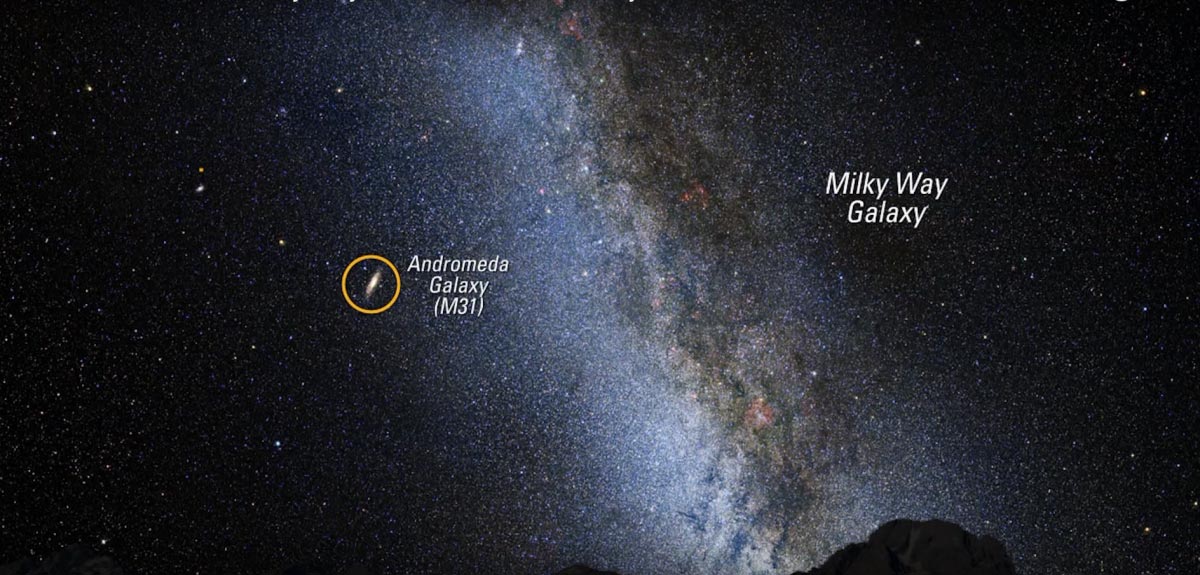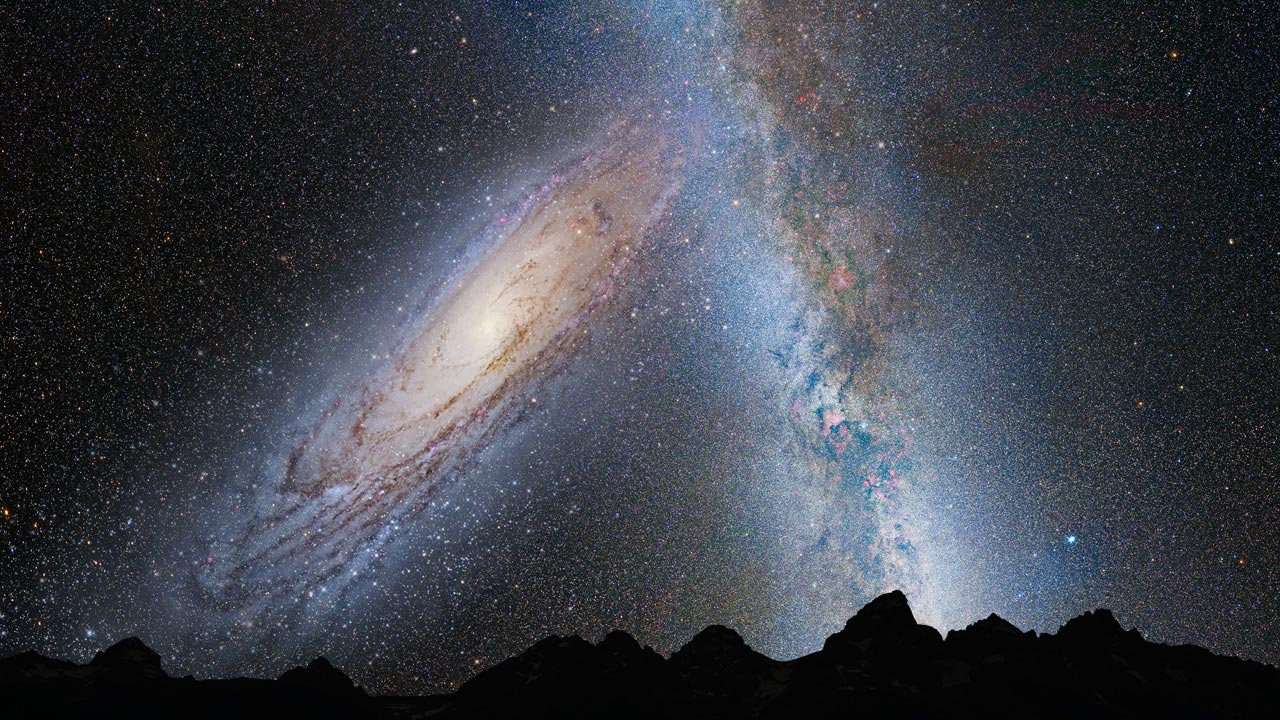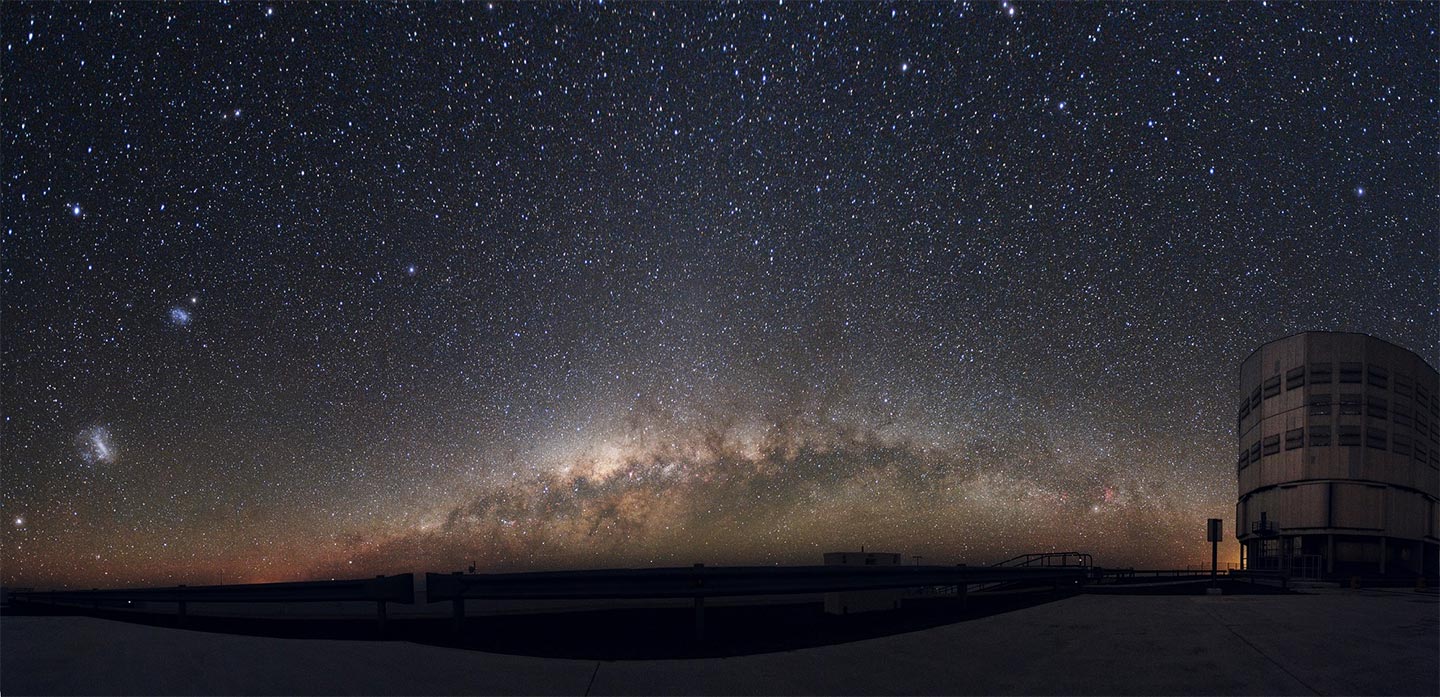What galaxies can you see with the naked eye?

Galaxies are large groups of stars, gas, and dust that hold together due to gravity. Some galaxies contain hundreds of billions of stars and are very bright, while others are smaller and less bright. Even though they are far from Earth, you can see some galaxies without telescopes or other special equipment. Here is more information about the galaxies that you can see without help:
Naked-eye galaxies
Let’s start with the most known, the Andromeda (M31) Galaxy which can be seen seen from Earth like in the image above.
The Andromeda Galaxy, also known as Messier 31, M31, or NGC 224, is a spiral galaxy like the Milky Way approximately 2.5 million light-years from Earth, is approximately 220,000 light years across, and it is the largest galaxy of the Local Group, which also contains the Milky Way, the Sombrero Galaxy, and other smaller galaxies like the Large and Small Magellanic Clouds. Andromeda is the closest big galaxy to the Milky Way and is expected to collide with the Milky Way around 4 billion years from now. The two will eventually merge into a single new galaxy called Milkomeda:

(Now that’s a stunning view! Something I don’t want to miss ever.)
Apart from Andromeda you can also see the Large and Small Magellanic Clouds in the Southern Hemisphere, the Magellanic clouds are naked eye (dwarf) galaxies that orbits the Milky Way Galaxy.
The Magellanic Clouds are two irregular dwarf galaxies that orbit our Milky Way Galaxy.
The Large Magellanic Cloud and its neighbour and relative, the Small Magellanic Cloud, are conspicuous objects in the southern hemisphere, looking like separated pieces of the Milky Way to the naked eye. Roughly 21° apart in the night sky, the true distance between them is roughly 75,000 light-years. The two small blobs on the left side of the image are the Large and Small Magellanic clouds:

Large and Small Magellanic clouds
You can also see the Triangulum Galaxy, also known as M33, without a telescope. M33 is located about 3 million light-years away and is smaller and less bright than the Andromeda Galaxy. It is a faint patch of light in the constellation Triangulum and has an apparent magnitude of 5.7. It might be hard to see because of its low surface brightness, but it is still visible under the right conditions.
Visible Galaxy Clusters
There are also groups of galaxies called galaxy clusters that you can see without a telescope. These clusters have hundreds or thousands of galaxies that hold together due to their mutual gravitational attraction. The Virgo Cluster is one of these clusters and is located about 50 million light-years away. It has more than 1,000 galaxies and is a diffuse patch of light in the constellation Virgo with an apparent magnitude of 7.5. The Coma Cluster is another galaxy cluster that you can see without a telescope. It is located about 300 million light-years away and has more than 1,000 galaxies. It is a faint patch of light in the constellation Coma Berenices with an apparent magnitude of 9.0. You might need binoculars or a small telescope to see it.
There are also other objects in the sky that you can see without a telescope, such as the Large Magellanic Cloud and the Small Magellanic Cloud, which are satellite galaxies of the Milky Way that you can see in the southern hemisphere. There are also nebulae and star clusters, like the Orion Nebula and the Pleiades, that you can see without help.
In conclusion, there are many galaxies and other objects in the sky that you can see without a telescope, but you need a clear, dark sky and to know where to look. Even though these objects might be faint and hard to see, they are still amazing and offer a glimpse into the vastness and complexity of the universe. Whether you are an experienced stargazer or just starting out, there is something for everyone to see and enjoy in the night sky.
This is a list of galaxies that are visible to the naked-eye, for at the very least, keen-eyed observers and dark skies are always better, a nice pair of binoculars helps a lot.
- Black Eye Galaxy,
- Bode’s Galaxy,
- Cartwheel Galaxy,
- Cigar Galaxy,
- Comet Galaxy,
- Cosmos Redshift 7,
- Hoag’s Object,
- Mayall’s Object,
- Pinwheel Galaxy,
- Sombrero Galaxy,
- Sunflower Galaxy,
- Whirlpool Galaxy
And many more, about 51 galaxies. For a complete list visit the Wikipedia page.
